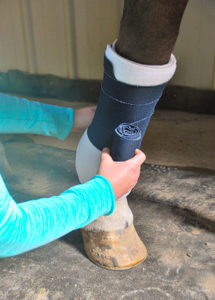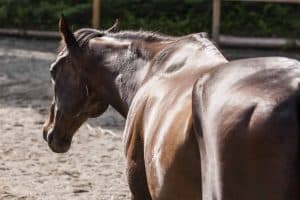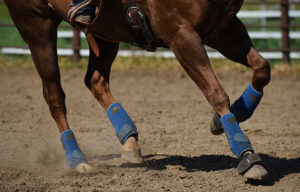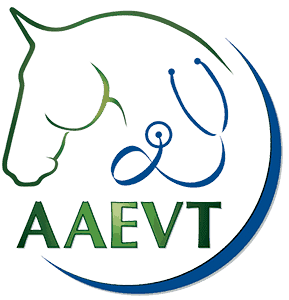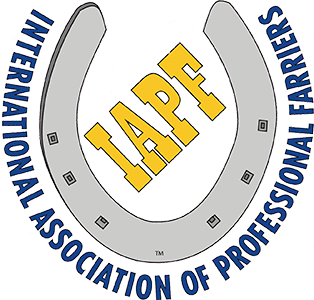Mysterious Eye Inflammation Traced to Plant Burrs
Fall and winter sometimes bring unexplained eye problems in horses and cattle, with irritation and inflammation, or corneal ulcers. Veterinarians at the Virginia-Maryland Regional College of Veterinary Medicine, Cornell University, and New York State College of Veterinary Medicine have recently discovered the cause. Some of the horses examined at these college clinics over the past several years had microscopic barbed "slivers" embedded in the eye–bristles from the seed heads of the burdock plant. A burdock sliver of this type is called a pappus.
According to William C. Rebhun, DVM, Department of Clinical Sciences, Cornell University, foreign bodies in the conjunctiva (the delicate membrane that lines the eyelids and covers the sclera–the "white" of the eye) of domestic animals are usually of plant origin. He noted that hunting dogs often get seeds, awns, and other plant parts in their eyes; cattle are constantly exposed to plant material in feed, bedding, and tall pastures; and although horses might get dirt and dust in their eyes during speed performance, most foreign bodies that invade a horse’s eyes also are plant material.
Large seeds and pieces of hay or straw in the eye usually work their way to the corner, where tears wash them out. Occasionally, they are trapped under the eyelid and cause irritation and scraping of the cornea (the tough transparent covering of the eye), leading to keratitis (inflammation of the cornea) or erosion or ulceration of the cornea. But large foreign particles usually can be seen during an eye examination and flushed free or removed.
By contrast, tiny foreign bodies less than 3 millimeters in length can be hard to locate and remove. Tiny slivers can easily become entangled in the folds of the eyelid lining. When caught under the lid, embedded in the lining, they create a sore by scraping against the eyeball each time the animal blinks. As Rebhun explains, their presence under the eyelid usually affects the area of the cornea opposite the affected lid, creating corneal abrasions, erosions, or ulcers. Symptoms include sensitivity to light and holding the affected eye closed, discharge and weeping of the eye, contraction of the pupil, and positive fluorescein dye uptake at the site of the corneal damage–all of which might mislead the examining veterinarian into making a diagnosis of corneal injury. Rebhun pointed out that an embedded foreign body might not be suspected until the corneal damage fails to respond to conventional therapy (topical antibiotics and drugs to keep the eye dilated) within a reasonable period
Create a free account with TheHorse.com to view this content.
TheHorse.com is home to thousands of free articles about horse health care. In order to access some of our exclusive free content, you must be signed into TheHorse.com.
Start your free account today!
Already have an account?
and continue reading.
Written by:
Heather Smith Thomas
Related Articles
Stay on top of the most recent Horse Health news with
